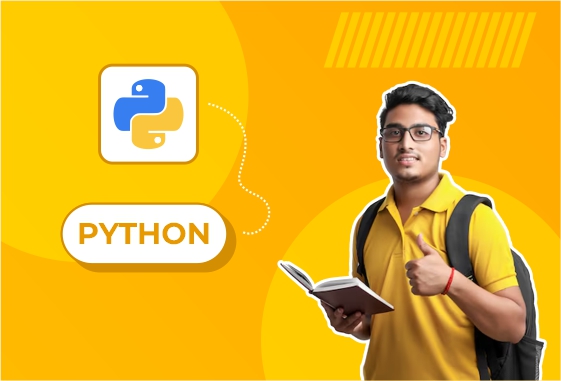
Language Translation System
The Language Translation System data science project focuses on developing an automated system that can translate text or speech from one language to another using advanced techniques in Natural Language Processing (NLP) and machine learning. The goal is to enable cross-lingual communication, making it easier for people who speak different languages to understand each other. The project typically involves training models that can process large datasets in multiple languages and produce accurate translations.
Project Overview:
The Language Translation System uses Machine Translation (MT) models to automatically convert text from a source language to a target language. These systems use advanced NLP and deep learning techniques, particularly neural networks, to learn language patterns and generate translations. There are two main types of machine translation systems:
Rule-Based Machine Translation (RBMT): Relies on linguistic rules and dictionaries to translate text.
Statistical Machine Translation (SMT): Uses statistical models based on bilingual text corpora.
Neural Machine Translation (NMT): The modern approach that uses deep learning models, especially sequence-to-sequence (Seq2Seq) architectures with attention mechanisms, for high-quality translation.
Steps Involved:
Data Collection:
Parallel Corpora: The primary dataset for training language translation models consists of pairs of sentences in the source and target languages. Examples of datasets include:
Europarl Dataset: A parallel corpus of European Parliament proceedings in multiple languages.
Tatoeba Dataset: A collection of sentence pairs for several languages.
OpenSubtitles Dataset: A large parallel corpus derived from movie subtitles in various languages.
Preprocessing: The data should be cleaned to remove special characters, non-standard text, and irrelevant information. Tokenization is performed on both the source and target languages to break the text into manageable parts (words or subwords).
Data Preprocessing:
Text Normalization: Convert all text to lowercase, remove punctuation, and handle any domain-specific terminologies.
Tokenization: Split the text into smaller chunks like words or subwords, which the model can process. For more advanced models, subword tokenization (using techniques like Byte Pair Encoding or WordPiece) helps reduce vocabulary size and handle out-of-vocabulary words.
Padding and Truncation: Sentences are padded to a fixed length for batch processing, or excessively long sentences are truncated.
Model Selection:
Neural Machine Translation (NMT): Modern machine translation typically uses Seq2Seq models that consist of an encoder and a decoder. The encoder processes the input text, and the decoder generates the translated output.
Attention Mechanism: The Attention mechanism is a key innovation in NMT. It allows the model to focus on relevant parts of the input sentence while generating the translation, leading to more accurate translations, especially for long sentences.
Transformer Models: Transformer architectures (like BERT, GPT, and T5) have revolutionized translation tasks by enabling more efficient and scalable models. They use self-attention mechanisms to capture relationships between words in a sentence, regardless of their distance from each other.
Pre-trained Models: Leveraging pre-trained models, such as OpenAI's GPT, Google's BERT, or Facebook's M2M-100, can improve translation performance, particularly when fine-tuned on a specific domain.
Training the Model:
Supervised Learning: Train the model using a large amount of parallel text data (source-target language pairs). The model learns to predict the target language translation for each input sentence.
Backpropagation and Optimization: The model adjusts its parameters using gradient descent and backpropagation to minimize the loss function, often measured as cross-entropy loss between the predicted and actual target sentences.
Hyperparameter Tuning: Fine-tune hyperparameters such as learning rate, batch size, number of layers, and hidden units to optimize the performance of the model.
Evaluation:
BLEU (Bilingual Evaluation Understudy) Score: Measures the precision of n-grams (like unigrams, bigrams) in the generated translation compared to a reference translation. BLEU is one of the most widely used evaluation metrics for machine translation.
ROUGE (Recall-Oriented Understudy for Gisting Evaluation): Measures the overlap between n-grams in the machine-generated and human-generated translations.
METEOR: A metric that evaluates the quality of translations by considering synonyms, stemming, and word order.
Human Evaluation: In addition to automated metrics, human evaluation of translations is crucial to assess the fluency, adequacy, and naturalness of the generated translations.
Model Fine-Tuning:
Transfer Learning: Fine-tuning pre-trained models (like BERT, T5, or MarianMT) on your specific dataset to improve domain-specific translation quality.
Data Augmentation: Use techniques like back-translation (translating text back to the source language and then back to the target language) to augment the dataset and improve model robustness.
Deployment:
API Development: Develop APIs that allow users to input text in one language and receive translations in real-time.
Web and Mobile Applications: Deploy the model to platforms like websites or mobile apps for easy access by users. For example, integrating the translation model into a chatbot or virtual assistant.
Cloud Deployment: Use cloud services like AWS, Google Cloud, or Azure to deploy the translation system at scale.
Continuous Improvement:
Feedback Loops: Continuously improve the model by collecting feedback from users and retraining the model with new data.
Translation Memory: Implement systems that can store previous translations and reuse them for future translations, enhancing efficiency and consistency.
Tools and Technologies:
Programming Languages: Python, JavaScript
Libraries and Frameworks:
TensorFlow, Keras, PyTorch for building and training deep learning models.
Hugging Face Transformers for pre-trained models like BERT, GPT, and MarianMT.
OpenNMT, Fairseq for building custom machine translation systems.
NLTK, spaCy for NLP preprocessing tasks.
Google Cloud Translation API, Microsoft Translator API for integrating pre-built translation services.
Flask, Django for API development.
Conclusion:
The Language Translation System project provides an excellent opportunity to dive deep into Natural Language Processing, deep learning, and machine translation techniques. By building a translation system, students can gain hands-on experience with advanced NLP models, especially sequence-to-sequence models and transformers. This project can have a wide range of applications in global communication, business, and customer support, bridging language barriers and improving access to information across languages.





